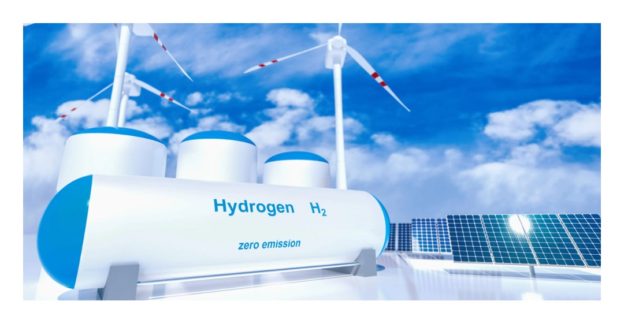India, as a leader in renewable energy (RE), is in a unique position to take a lead role in the development of a H2 economy. Its total RE generation potential is estimated to be 1,097.465 GW. Over the last seven years, India has invested more than $70 billion in RE. This amounts to 1.89% of the total investments received across all sectors during the same time.
The potential of green hydrogen in India was highlighted by a recent report from The Energy and Resources Institute, which is based in New Delhi.
Judging by remarks from those in power, it could well play an important role in the country’s future.
India’s newfound focus on “green hydrogen” has received a boost, with a new collaboration between two firms aiming to install production facilities in the state of Tamil Nadu.
In an announcement at the end of last week, Nasdaq-listed Fusion Fuel Green — which has offices in Ireland and Portugal — said it had signed an agreement with BGR Energy Systems, an engineering, procurement and construction firm whose corporate headquarters are in Chennai.
The agreement is centered around the development of green hydrogen projects in India, with the firms looking to set up a demonstration facility in Cuddalore, Tamil Nadu, later this year.
The facility set to be built in Tamil Nadu will use proprietary technology from Fusion Fuel Green which produces hydrogen using solar energy.
Following the establishment of the initial plant, the companies will focus on the development of bigger projects in the region.
According to Fusion Fuel Green, these will be centered around supplying hydrogen “for the production of green ammonia and bio-ethanol.”
In addition, it’s envisaged that the hydrogen will be used “as a feedstock for other heavy industrial applications.”
In a statement issued alongside Fusion Fuel Green’s announcement, Arjun Govind Raghupathy, who is the managing director of BGR Energy, said his firm was “excited … to be taking these steps to establish a foothold in the burgeoning green hydrogen industry.”
A brief guide to hydrogen
Described by the International Energy Agency as a “versatile energy carrier,” hydrogen has a diverse range of applications and can be deployed in sectors such as industry and transport.
Examples of its use in the latter include trains, airplanes, cars and buses powered using hydrogen fuel-cells.
Hydrogen can be produced in a number of ways. One method includes using electrolysis, with an electric current splitting water into oxygen and hydrogen.
If the electricity used in the process comes from a renewable source such as wind or solar then it’s termed “green” or “renewable” hydrogen.
At the moment, the vast majority of hydrogen generation is based on fossil fuels, which in turn has an effect on the environment. The IEA has said that hydrogen production is responsible for roughly 830 million metric tons of carbon dioxide each year.
So-called “blue hydrogen” refers to hydrogen produced using fossil fuels — usually natural gas — with the associated emissions captured and stored.
Green hydrogen — which is currently expensive to produce — accounted for just 0.1% of worldwide hydrogen production in 2020, according to Wood Mackenzie.
India’s aims
Judging by remarks from those in power, green hydrogen could well play an important role in India’s future.
In a speech last November, Prime Minister Narendra Modi said his country was proposing to launch what he described as “a comprehensive National Hydrogen Energy Mission.”
Presenting the country’s budget last month, Nirmala Sitharaman, India’s finance minister, referenced Modi’s announcement, adding: “It is now proposed to launch a Hydrogen Energy Mission in 2021-22 for generating hydrogen from green power sources.”
The potential of green hydrogen in India was highlighted by a recent report from The Energy and Resources Institute, which is based in New Delhi.
“As of today, essentially all of the hydrogen consumed in India comes from fossil fuels,” TERI’s report, called “The Potential Role of Hydrogen in India,” stated. “However, by 2050, nearly 80% of India’s hydrogen is projected to be ‘green’ – produced by renewable electricity and electrolysis,” it added.
In the mid-term, TERI said the cost of hydrogen from renewables would drop by over 50% by 2030, enabling it to “start to compete with hydrogen produced from fossil fuels.”
Taking a step back and looking at the bigger picture with regards to energy, India’s government is targeting 450 gigawatts of renewable capacity by 2030. The ambition to become a more sustainable country represents a significant challenge: India is the planet’s third biggest emitter of greenhouse gases, with only China and the U.S. ahead of it.
A changing landscape
Fusion Fuel Green is not the only European firm attempting to gain a foothold in India’s hydrogen sector.
In February, India’s Ministry of Petroleum & Natural Gas said a statement of intent had been signed between Indian Oil and Greenstat Hydrogen India, a subsidiary of Norwegian energy company Greenstat, to establish a Center of Excellence on Hydrogen.
According to the ministry, the center of excellence “will be a vehicle for promoting R&D projects in Green and Blue Hydrogen between Norwegian and Indian R&D institutions/universities.”
https://www.cnbc.com/2021/03/10/india-turns-to-green-hydrogen-in-a-bid-to-decarbonize-its-economy.html





